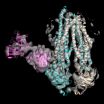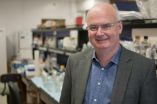(Press-News.org) Hot flushes are one of the most distressing conditions faced by women who have been treated for breast cancer, but they are not being adequately addressed by healthcare professionals and some women consider giving up their post cancer medication to try and stop them, a new study has shown.
More than 70 per cent of women who have had breast cancer experience menopausal problems, and hot flushes in particular, which are among the most prevalent and potentially distressing problems following breast cancer treatment. These can also be long lasting, persisting for more than five years once cancer treatment has ended and affecting all aspects of life, including sleep, social situations, intimate relationships and ability to work.
But research has shown that there are differences between what the patient experiences and what is recognised, and then managed, by healthcare professionals.
Led by Dr Debbie Fenlon at the University of Southampton, the study conducted two surveys with specialist health professionals and women who had been treated for breast cancer.
While clinicians recognised that their patients experienced hot flushes and their quality of life is diminished, the way that they treated the condition was mixed. The majority (94 per cent) of respondents agreed or strongly agreed that hot flushes are an unmet need.
Results from the women's survey showed that they perceived the impact of hot flushes as being much greater than the healthcare professionals reported. The majority of the healthcare professions reported that only 10 to 30 per cent of breast cancer patients have severe hot flushes that affect daily living and quality of sleep. In contrast, when the women were asked to give a problem rating (one to 10) for their hot flushes in the past week, the majority of respondents rated flushes between six and 10 (out of 10) as to how much of a problem they are and six and 10 (out of 10) for how distressed they were by flushing.
Furthermore, of 666 women who responded to the questionnaire, 94 per cent said that they suffered from hot flushes and 75 per cent rated them as a major problem in their life. However only 25 per cent had ever been spoken to by a health professional about their hot flushes.
Dr Fenlon comments: "It is clear from our surveys that clinicians are left making individual decisions based on personal experience and availability of local services. This has led to a patchy and inequitable position for patients in the management of this troubling problem. There is a need for research to understand the physiology of flushing and to develop and test new interventions to address this intractable problem, which continues to be a cause of considerable distress to many women after breast cancer."
A troubling result from the women's survey was that a third of women having hot flushes considered stopping taking their oestrogen blocking drugs to prevent the flushes from happening.
Dr Fenlon explained: "Endocrine therapies generally work by preventing the production of oestrogen, a hormone that encourages breast cancer to grow and spread. This says much for how bad and distressing hot flushes can be that women are considering not taking their oestrogen blocking drugs to try and stop them.
"There are no agreed guidelines for managing hot flushes after breast cancer, which may limit the access and availability of appropriate interventions. There is also little evidence to support a variety of interventions, none of which are entirely effective at removing hot flushes, other than Hormone Replacement Therapy, which is contraindicated. This needs to be changed to ensure this patient group is not left vulnerable."
INFORMATION:
The research was carried out by a number of organisations, led by the University of Southampton, alongside Independent Cancer Patients Voices, the University of Warwick, the National Cancer Research Institute, Breast Cancer Care and Breast Cancer Campaign. It has been presented at the National Cancer Research Institute Cancer Conference by Lesley Turner from Independent Cancer Patients Voices, supported by Professor Janet Dunn from the University of Warwick.
This news release is available in German.
"On the one hand, ABC transporters causes diseases such as cystic fibrosis, while on the other hand they are responsible for the immune system recognising infected cells or cancer cells," explains Professor Robert Tampé from the Institute for Biochemistry at the Goethe University. The considerable medical, industrial and economic significance of ABC transporters is also based on the fact that they cause bacteria and other pathogens to become resistant to antibiotics. Likewise, they can help cancer cells to defend themselves ...
CORAL GABLES, Fla. (November 4, 2014) — Think about the way our bodies are assembled during early development and ask: How do neighboring cells know that they are supposed to become a nerve or a bone cell and how do these tissues find the correct place and alignment? Researchers at the University of Miami (UM) are answering these crucial questions.
In a new study, UM researchers describe the signaling systems that tissues use to communicate with their surrounding neighbors, at the head-trunk region. Their discovery may have important implications for the treatment ...
Sublingual misoprostol is inferior to intramuscular oxytocin for the prevention of postpartum hemorrhage (PPH) in women undergoing uncomplicated birth at a regional hospital in Uganda, according to trial results published in PLOS Medicine. The randomized non-inferiority trial, conducted by Esther Cathyln Atukunda at the Mbarara University of Science and Technology, Uganda, and colleagues, showed that PPH incidence in the misoprostol arm exceeded that in the oxytocin arm by 11.2% (95% confidence interval 6.44%-16.1%).
PPH is responsible for 25–30% of maternal deaths. ...
In an analysis of the 2003–2010 MarketScan US database, Rakesh Bhattacharjee and coauthors (University of Chicago, Chicago, Illinois) compared hospital admissions and prescriptions for children with asthma who underwent adenotonsillectomy before and after surgery to determine whether their asthma control improved (based on ICD-9-CM and CPT codes, as well as drug prescriptions) in the year after compared with the year before surgery. They also compared the children with children with asthma who did not undergo adenotonsillectomy who were the same age and sex and lived ...
Surgical removal of the tonsils and adenoids in children suffering from sleep apnea is associated with decreased asthma severity, according to the first large study of the connection, published in the journal PLOS Medicine.
Researchers from the University of Chicago found that in the first year after the operation, children who had the surgery had a 30 percent reduction in acute asthma exacerbations and a 38 percent decrease in acute status asthmaticus—a medical emergency.
They also found pediatric patients who received the surgery had a 36 percent reduction ...
Asthma may be more harmful than was previously thought, according to UCLA researchers who found that genetic damage is present in circulating, or peripheral, blood. Doctors previously thought that the genetic damage it caused was limited to the lungs.
In the study, researchers looked for the overexpression of a cytokine called interleukin 13 (IL-13), which is known to mediate inflammation, a critical problem for people with asthma.
The study, which was conducted in an animal model that mimicked human asthma, was the first to assess the role of IL-13 in genetic damage ...
RENO, Nev. – The puzzle pieces of tectonic plates that make up the outer layer of the earth are not rigid and don't fit together as nicely as we were taught in high school.
A study published in the journal Geology by Corné Kreemer, an associate professor at the University of Nevada, Reno, and his colleague Richard Gordon of Rice University, quantifies deformation of the Pacific plate and challenges the central approximation of the plate tectonic paradigm that plates are rigid.
Using large-scale numerical modeling as well as GPS velocities from the largest ...
WASHINGTON, D.C., November 4, 2014--If you took the junk from the back of your closet and combined it with the dirty laundry already on your floor, you would have an even bigger mess. While this principle will likely always hold true for our bedrooms, it turns out that in certain situations, combining messes can actually reduce the disorder of the whole. An international team of researchers from Slovenia and Iran has identified a set of conditions in which adding disorder to a system makes it more orderly. This behavior is known as antifragility, a concept introduced recently ...
A newly published research study examining only marketing directed at children on the interior and exterior of fast food restaurants has found that the majority of black, middle-income and rural communities are disproportionately exposed to such marketing tactics.
Authored by Arizona State University researcher Punam Ohri-Vachaspati and her colleagues, the study is the first to examine the use of child-directed marketing on the interior and exterior of fast food restaurants and its relationship to demographics. It adds to a substantial body of literature on the effects ...
PITTSBURGH—It's commonly believed that creativity is a process that involves connecting ideas and building on the past to create something new. But is it better to "think outside the box," using unrelated concepts to get the creative juices flowing, or to build on something more closely related to the problem one is trying to solve?
In a paper newly published in Design Studies, recent University of Pittsburgh graduate Joel Chan and his mentor Christian Schunn of Pitt's Learning Research and Development Center, along with Carnegie Mellon University's Steven Dow, ...



